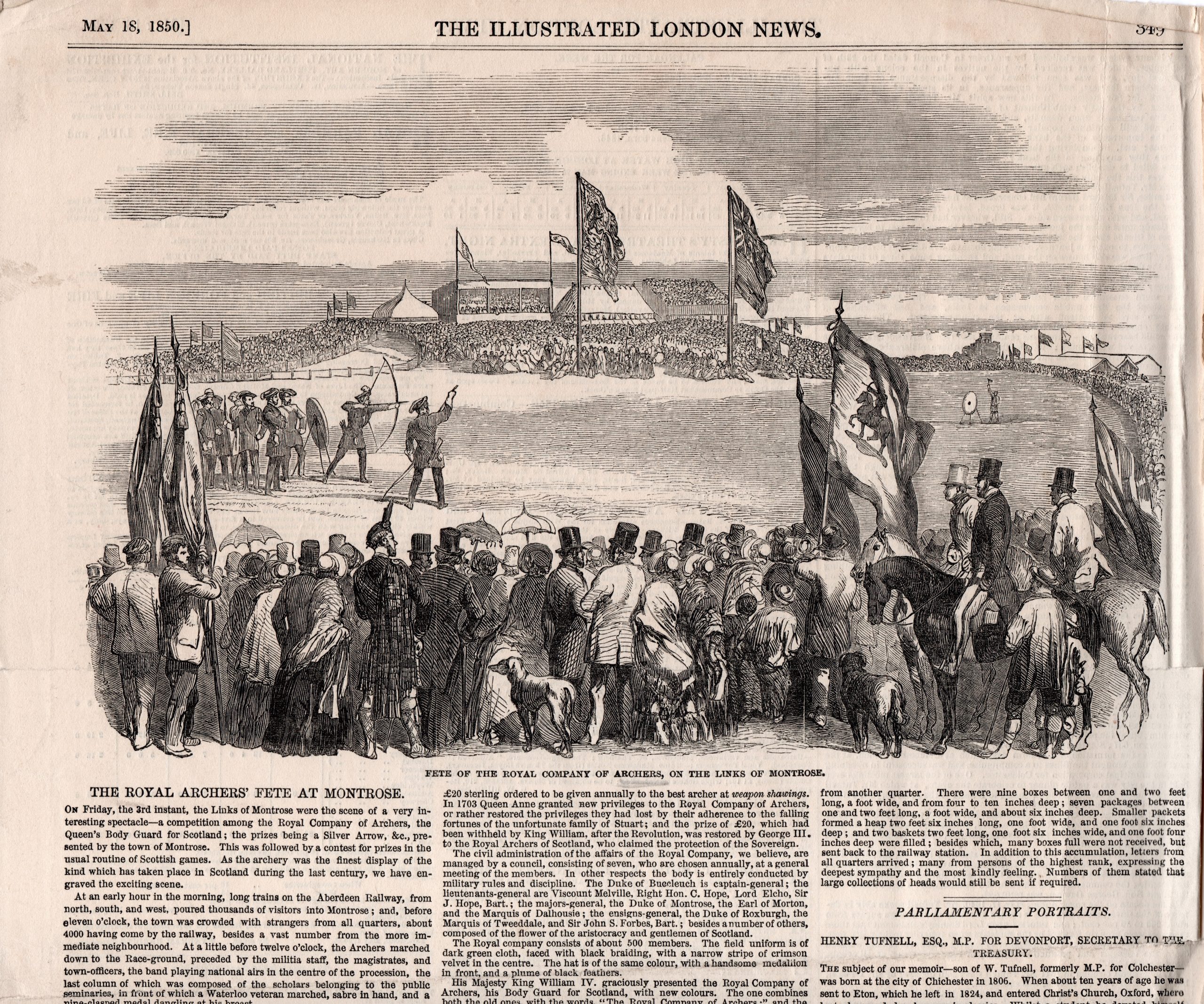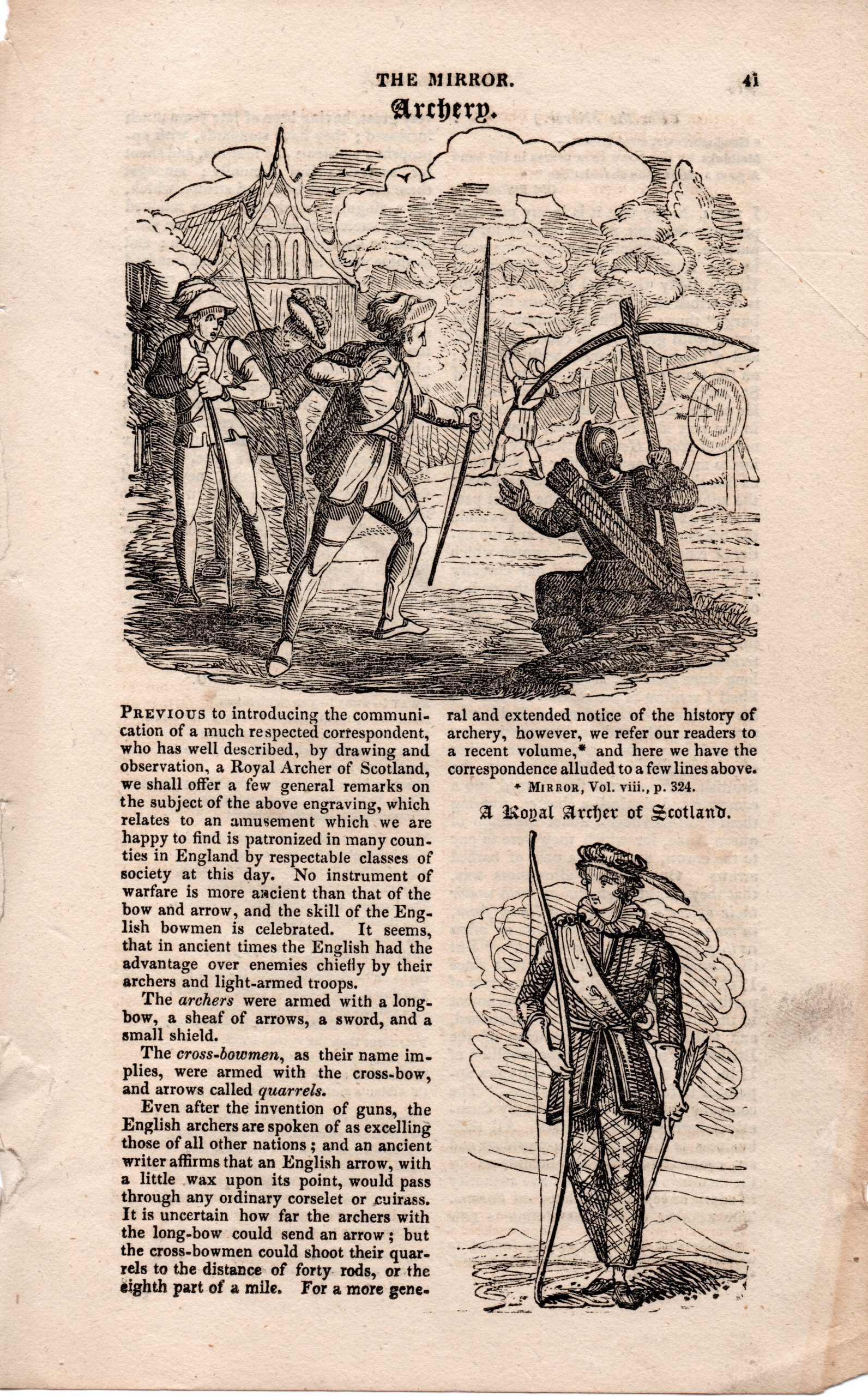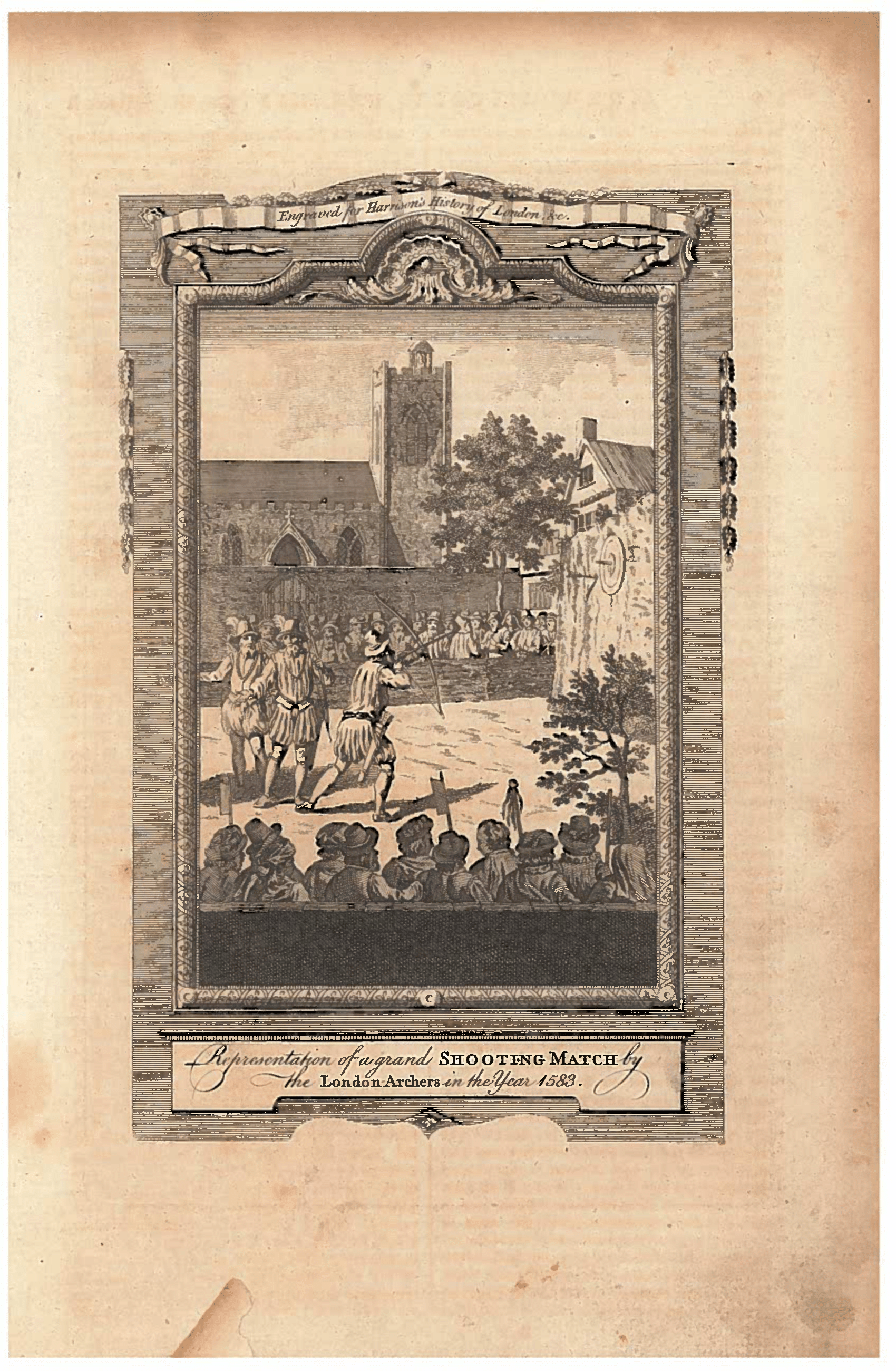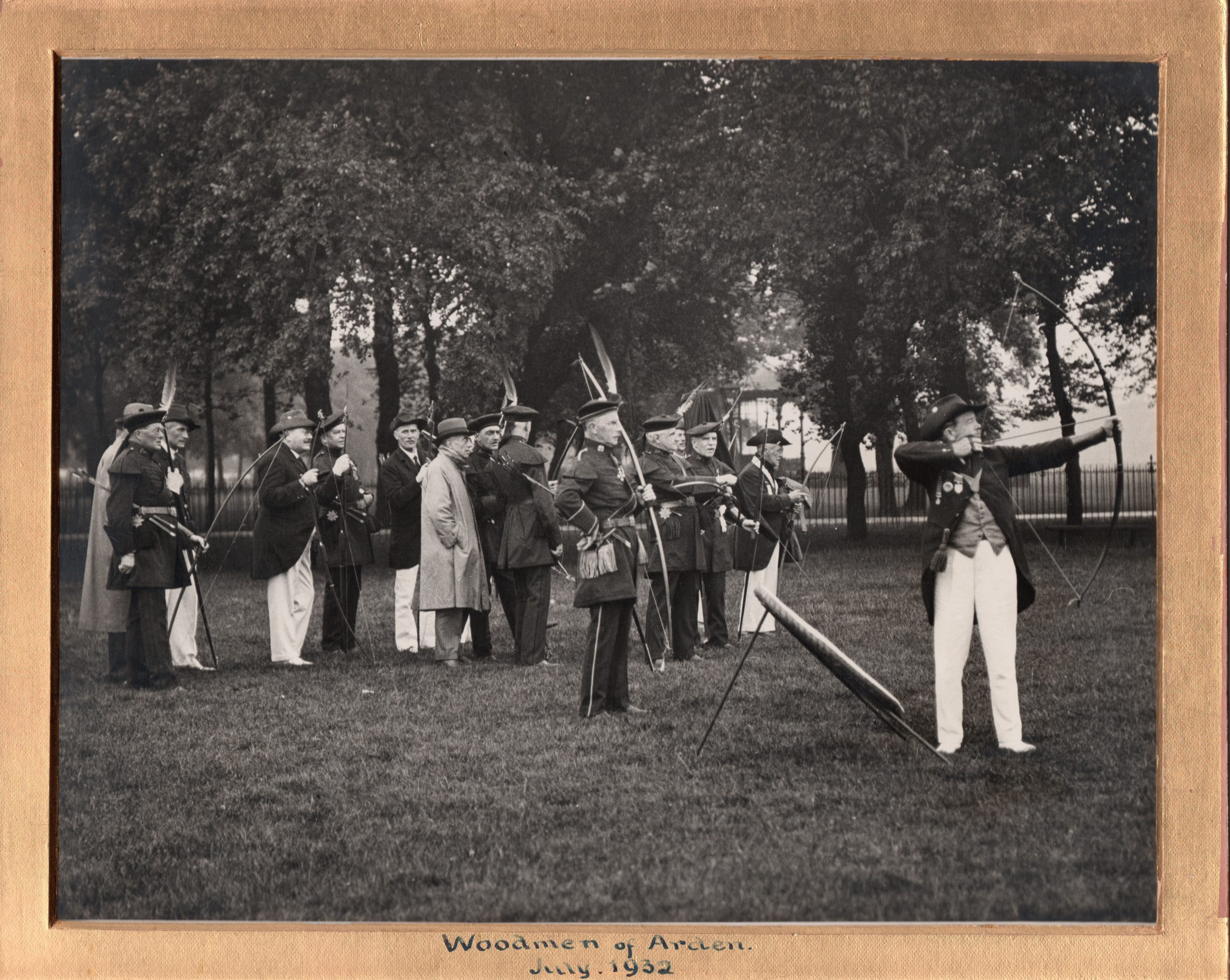The national context which led to the foundation of the Royal Company of Archers in 1676 may be found at The Origins of The Royal Company. This section provides an overview of the development of archery as a popular recreational pastime.
The earliest record of an archery contest is to be found in Homer’s epic poem the Iliad. Little is known of Homer but he is believed to have lived around 750 BC. The backdrop to the Iliad is the Trojan War, the date of which is held to be between 1194 – 1184 BC.
In Book XXIII, Homer tells of the funeral games in honour of Patroclus, who had been killed by Hector during the siege of Troy. Achilles set up a ship’s mast at these funeral games. A pigeon was tied, by one leg, to the mast. To Teucrus went the honour of the first arrow. This hit the ribbon and the pigeon flew off. The second archer, Meriones, seized the bow from Teucrus. His arrow struck the bird in the chest and it fell at his feet.
Not only is this the earliest reference to an archery competition but a form of the competition was taken up in the fifteenth century in Scotland by the Ancient Society of Kilwinning Archers (circa 1483) in Ayrshire. Known after old words for a ‘parrot’ as either a ‘popinjay’ or a ‘papingo’, a form of this competition was introduced to the Royal Company in 1832 and survives to this day as the Papingo Medal. The target was originally the image of a colourful bird, such as a parrot, painted onto wood.
In 1537, King Henry VIII granted to ‘certain gentlemen of his Court [a Royal Charter] empowering them to form a Guild of Artillery, of ‘long-bowes, cross-bowes, and hand-gonnes.’ This guild was known as the Fraternity of St George but by 1658 the guild was referred to as the Artillery Company, from the French “arc tirer”. It then became known as the Honourable Artillery Company around 1685, a name which was authorised by Queen Victoria in 1860. Today, the HAC is the Army Reserve’s Intelligence, Surveillance and Reconnaissance Regiment and supports the Regular Army on operations. The Archers’ Company of the HAC was founded in 1781 as a private club by Sir Ashton Lever and continued into the late 19th century, meeting at Archers’ Hall in Regent’s Park.
With the military requirement for archers in decline, archery became a popular recreational pastime. Although the longbow was still just in military use, archery societies were established across the British Isles. The Society of Finsbury Archers in London had been established in 1652.
During the years of the Commonwealth (1649-1660), King Charles II took refuge on the Continent. In 1656 King Charles took up residence in Bruges in Flanders. He and his brother Henry, Duke of Gloucester, became members of the St Sebastian Archers Guild. Here,
‘Honouring the English longbow traditions, the King and his brother made archery their favourite sport and daily they were seen practising in the guild’s lanes.’
The Toxophilite Society of London, formed in 1781 for the practice of archery as a sport, sparked the great revival of archery at the end of the 18th century. At that time, the game varied from one society to another, but rules for scoring, the number of arrows to be shot, and the distances for shooting slowly evolved in an attempt to standardise the sport of competitive archery.
Queen Victoria, before her accession to the throne, had been both a patron of the Queen’s Royal St Leonard’s Archers and had actively shot with them.
Archery first appeared during the 1900 Olympics held in Paris but really only became established at the 1972 Munich Olympics. It has remained an Olympic sport ever since.
Archery is an activity and a sport dating back thousands of years and has been practiced in many cultures. Despite almost disappearing as a military, hunting, and ritual activity, archery still remains a recreational and competitive sport. Over the last century, many competitions have evolved using more modern materials in the equipment but the basic principles of ancient archery remain unchanged.




